
Dirt bike riding is a fun and popular outdoor activity. But when it comes to buying a dirt bike for your child, selecting the right size bike for your kid is an essential prerequisite.
A properly sized bike not only helps with balancing, allowing your child’s feet to touch the ground and maintain stability, but also affects control. Most importantly, safety is paramount—a well-fitted bike minimizes risks and boosts confidence, letting kids ride with assurance and enthusiasm.
This article is a comprehensive guide on how to choose the best dirt bike for your child and ensure a secure, surreal riding experience.
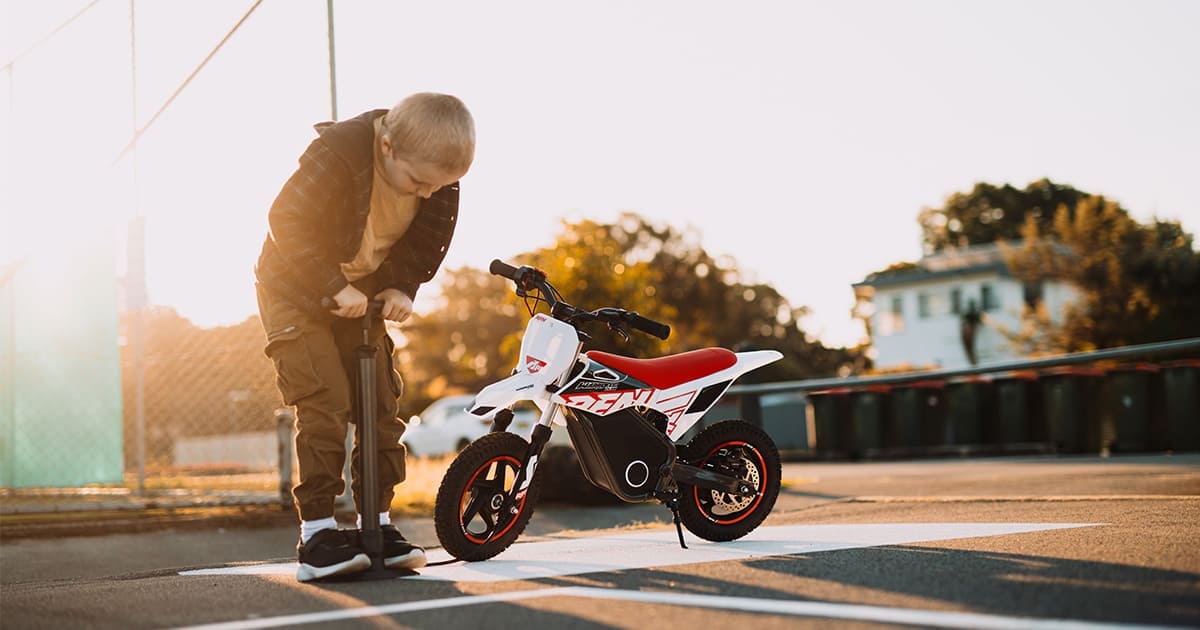
Detailed below are the ten factors that help you choose the right size dirt bike for your child:
The age of your child plays a vital role in bike determination. In most cases, the bike riding skills are directly linked to age, with more minor children being beginners. A smaller engine size is recommended for beginners. Dirt bikes come with different engine sizes, which are measured in CCs. If your child is starting the journey, we suggest a 50cc dirt bike. A 50cc bike is light in weight, offers lesser speeds to keep the ride safe, and suits small-heightened riders.
Similarly, a higher engine size (90cc, 125cc, etc.) requires more energy to control and should be used by mature kids. You can shift to higher engine sizes as your child grows in age, height, and skill. The engine sizes go up to 250cc. However, anything above 125cc dirt bikes should be reserved only for experienced riders.
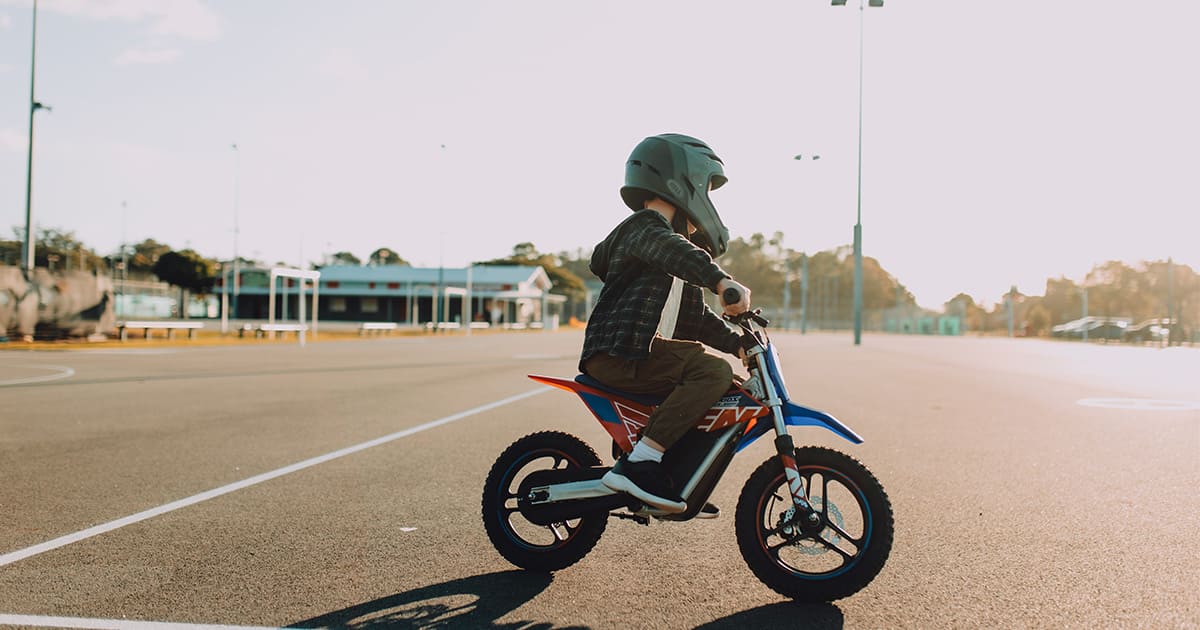
Age is an important parameter but not the only way to measure a child’s physique. When purchasing a dirt bike, you need to make sure it fits your kid’s height and weight.
The height of the bike should be such that the child’s feet touch the ground, but there shouldn’t be excessive folding of the knees. Generally, a 17-21-inch bike seat height is suitable for 3-7 year-olds. Children with a height of 4 feet 5 inches can ride bikes with seat heights of 21 to 28 inches.
Similarly, heavy riders require greater engine power. The common mini bikes can handle up to 85 pounds of weight, and mid-sized bikes can accommodate up to 200 pounds. So, you should always consider your child’s weight before selecting the engine size.
Typically, dirt bikes come in two transmission types: manual (with clutch) and automatic (without clutch). Beginners can not master the art of coordinating clutches and racing manually, so they should get an automatic transmission bike. These dirt bikes can still change gears. On the other hand, if your child has grip-overhand coordination, a manual transmission for shifting gears is ideal (and more fun!).
When selecting a dirt bike for children, the choice between a 2-stroke or 4-stroke engine should not be the primary consideration. We know that four-stroke engines accelerate smoothly and are easier to control (especially at low speeds). Similarly, two-stroke engines are favored by racers for their quick, powerful acceleration. But this distinction isn’t critical for young riders. Instead, as a parent, you should focus on factors like the child’s experience level, bike size, and overall handling rather than engine type.
Manufacturers add a throttle limiter as a safety feature. With a throttle limiter, parents can easily control the extent of the throttle a child can pull while riding. This effectively prevents the kids from going too fast. You can wind the throttle back when the child has learned self-control to allow him to pull the throttle fully.
Some modern dirt bikes come with an active GPS feature. This ensures that the risk of dirt bike injuries in children is reduced, as parents can monitor their child’s location in real-time. It allows them to keep track of the child’s whereabouts. Moreover, features like a throttle limiter also fall under the safety features of the dirt bike. Thus, make sure that this box is checked!
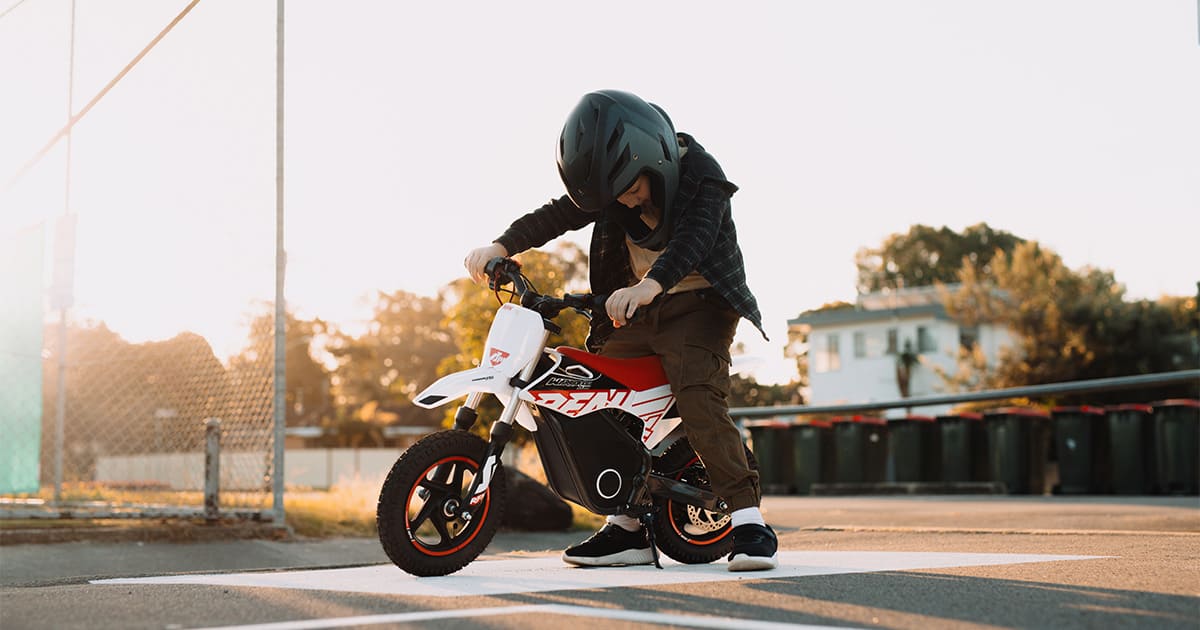
Most conventional bikes require a kickstart. However, now we can see a plethora of electric bikes that start without any physical effort. If your child likes the old-fashioned style of kickstarting, get him a kickstart one. Otherwise, electronic bikes are great to use.
Dirt bikes are usually expensive, and budgeting for the ride is an integral consideration. Kid’s dirt bikes can cost anywhere between $500 and $5000.
Here’s a general breakdown of price ranges for electric dirt bikes for kids:
Here’s a general breakdown of price ranges for gas-powered dirt bikes for kids:
Like their clothes, kids outgrow their starter bikes pretty quickly. Keeping in mind the short-lived fun, many parents prefer purchasing a used dirt bike at a reasonable price. However, the pleasure of owning a shiny new dirt bike surpasses all ecstasies. So, if you have some cash on you, we prefer you buy a new one.
The machinery is left to rust once your kid outgrows them. Therefore, many parents sell them to get some of their investment back. You can find plenty of such kid’s dirt bike offers in online and offline markets. Thus, the best idea would be to get a bike with good resale value. Major brand dirt bikes like KTM, Yamaha, and Suzuki provide good resale value.
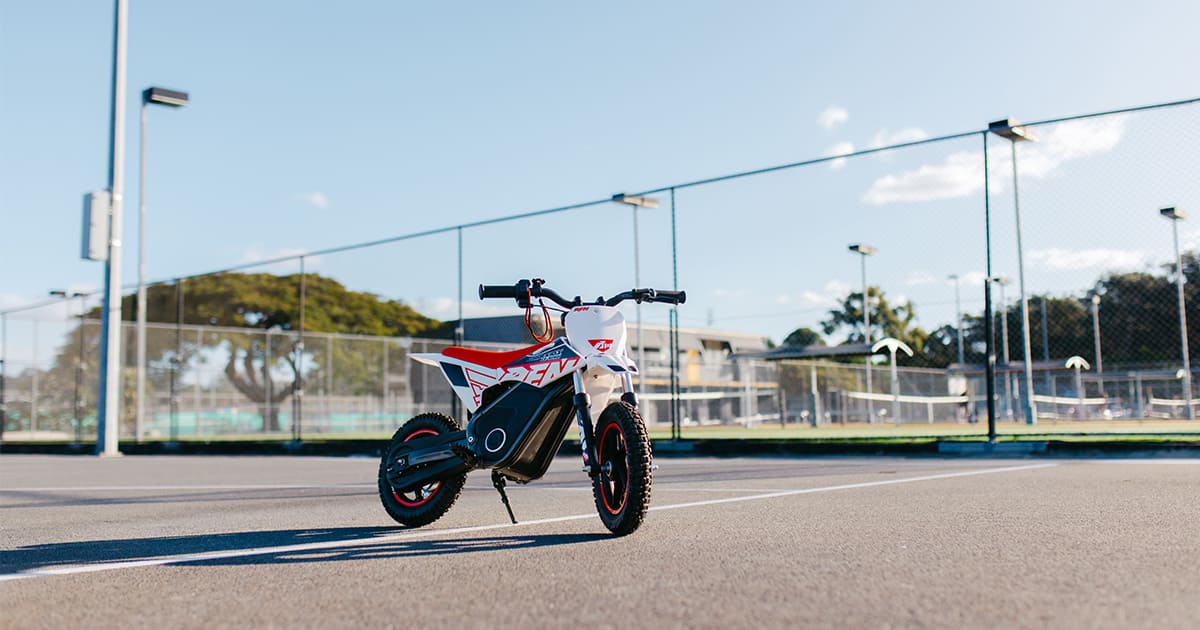
If you plan to buy a dirt bike for the first time, you might need some help!
There are different types (based on engine size) of kid’s dirt bikes available on the market and choosing the right one for your little one can be difficult. Thus, we break down what are the most commonly available bikes and who can ride them.
50cc Dirt Bike: The most basic bike is the 50cc bike. It is ideal for young, new beginners (4 to 8-year-olds) because the bikes are small and easy to handle due to their low weight. The top speeds are low, so you don’t need to worry about your child’s safety.
70cc Dirt Bike: The next commonly available engine size is a 70cc bike. These motorbikes are generally good for 8 to 12-year-olds. The bikes are slightly heavier than 50cc options but still not difficult to handle. With 20cc extra power, you can expect better speeds than a 50cc bike.
90cc Dirt Bike: Next up is the 90cc bike, which is heavy and powerful. Therefore, only 12 to 14-year-olds should ride it. The increased power of the engine means greater speeds. Thus, only a mature child should handle it.
110cc Dirt Bike: Anything above 90cc should only be ridden by teens. The ideal age for a 110cc bike is 14 to 16 years. These dirt bikes are high and are the heaviest of all. Handling this type of motor power and weight requires maturity and power.
For a simpler solution, we are providing a dirt bike size calculator:
Note: Mentioned below are not exact but the average prices of dirt bikes. The costs of bigger brands like Yamaha, Suzuki, etc., are above $1500 on average (PW50 by Yamaha costs around $1850).
| Child Age | Child Heigh (feet-inches) | Bike Seat Height (inches) | Engine Size (CCs) | Price Range ($) |
| 3 to 7 years | 2ft-7 inches to 3ft-7 inches | 17-21 inches | 50 cc | 400-600$ |
| 7 to 12 years | 3ft-7 inches to 4ft-7 inches | 21-25 inches | 50-110 cc | 650-800$ |
| 12 to 14 years | 5ft to 5ft-2 inches | 31-35 inches | 125 cc | 800-1000$ |
| 14 to 16 years | 5ft-2 inches to 5ft-8 inches | 35-38 inches | 125-250 cc | 1500-2000$ |
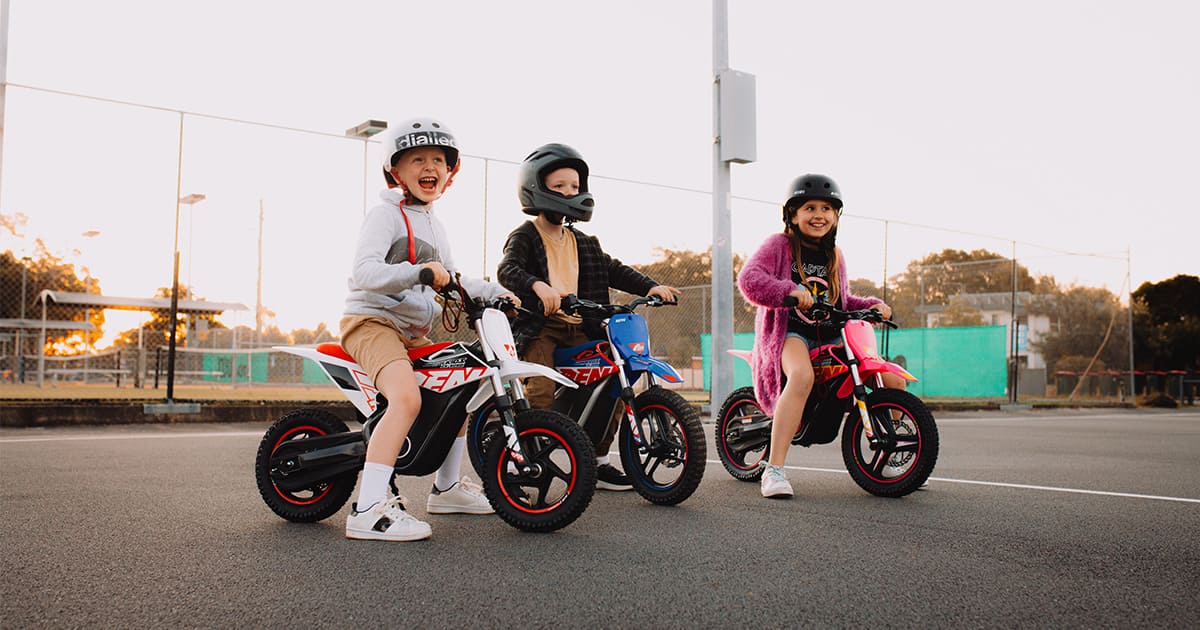
Dirt biking is a healthy activity for the kids. Selecting the right-sized dirt bike with protective and equipment gear ensures a seamless experience. A 50cc dirt bike is ideal for beginners (3-7-year-olds) to try riding a 50cc dirt bike. It provides a safe ride and is easy to handle for children. Dirt bikes above 125cc should be ridden by experienced teenagers.
Now that you know what size dirt bike is best for your child, go ahead and invest in the right one, and let the fun begin for your little one!
A 250cc dirt bike has a lot of power and must be handled by the experienced only. Skilled teens (12 years or above) can easily ride a 250cc dirt bike. Children of this age are generally strong enough to handle the height and weight of the bike.
Children as young as three can begin to ride a dirt bike safely. However, the most common age for toddlers enjoying a 50cc dirt bike is 5-7.
You can buy a used dirt bike if budget is a major concern. However, the downside of buying an older bike is that it may lack the advanced safety features of newer models. The most basic bikes from reputable brands like Yamaha and Suzuki costs more than $1800. Thus, it is better to buy a used bike when the child is growing up.
The selection of safety gear is extremely important for young dirt bike riders. To make your child’s ride safe, ensure he wears a full-body armor suit with gloves and a chest and back protector with elbow and knee pads. A helmet is also a must before riding a dirt bike.
At Apollino, we’re passionate about bringing the thrill of off-road riding to young enthusiasts. As a pioneering off-road motorcycle manufacturer, we specialize in producing high-quality youth dirt bikes that prioritize safety, performance, and fun. If you’re in the business of supplying off-road vehicles and looking for a reliable manufacturer of youth dirt bikes, we invite you to explore what Apollino has to offer. Together,
APOLLINO stands at the forefront as a top-tier manufacturer specializing off-road motorcycles, with the aim to spread its network worldwide. Join hands with our fantastic team. You can get instant quotes and order deliveries with the best quality products.
Connect with us today to join the ride towards innovation and explore the thrilling world of off-road adventures!